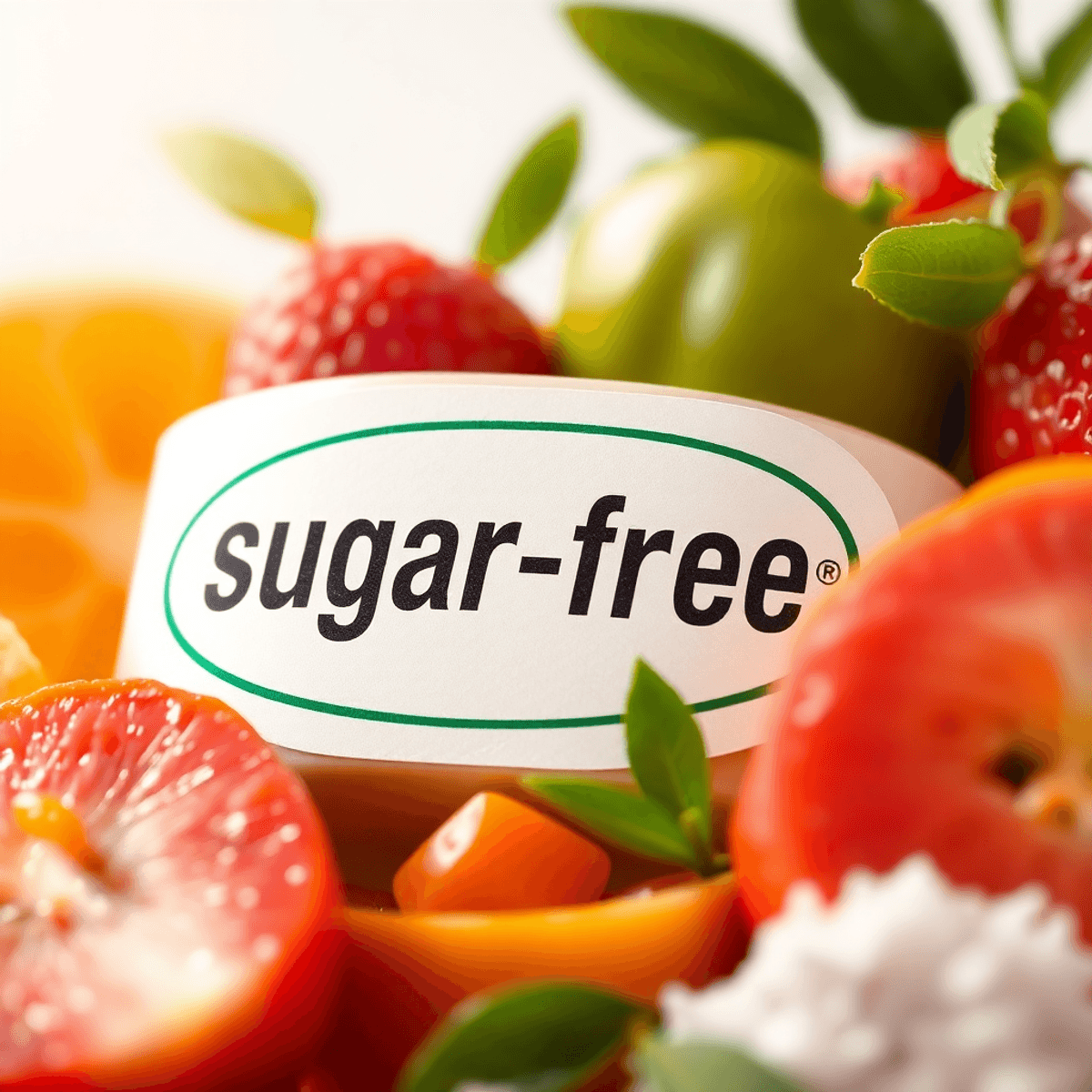The Sneaky Sweeteners: Are There Hidden Sugars in Sugar-Free Foods?
The quest for a healthier lifestyle often leads us down the sugar-free aisle. We reach for products labeled "sugar-free," envisioning a guilt-free indulgence. But are these products truly free of added sugars, or are there hidden culprits lurking in the ingredient list? The truth is more nuanced than a simple yes or no. While "sugar-free" has a specific legal definition, it doesn't guarantee the complete absence of sweeteners or carbohydrates that can impact your health. Let's uncover the secrets behind sugar-free labels and learn how to become a savvy consumer.

Decoding the "Sugar-Free" Label:
The term "sugar-free" is regulated by governing bodies like the FDA. To bear this label, a product must contain less than 0.5 grams of sugar per serving. This seems straightforward, but the catch lies in what constitutes "sugar" and how "serving" is defined.
The Hidden Sugar Landscape:
Here's where things get tricky. While a product might be technically "sugar-free" according to the labeling regulations, it can still contain other ingredients that contribute to sweetness, calories, or blood sugar levels. These hidden sugars can take many forms:
- Sugar Alcohols: These carbohydrates are partially absorbed by the body. While they often have a lower glycemic index than sugar, they can still contribute calories and, in some cases, raise blood sugar levels, especially when consumed in large quantities. Common examples include erythritol, xylitol, maltitol, sorbitol, and mannitol. They are often used to provide bulk and texture in sugar-free products.
- Other Sweeteners: A product might use a blend of various sweeteners, some of which may not be as widely recognized. It's crucial to check the ingredient list carefully for names like maltose, dextrose, corn syrup, high-fructose corn syrup (yes, even in some "sugar-free" items!), and fruit juice concentrates. These can contribute to added sugars even if the product claims to be "sugar-free."
- Naturally Occurring Sugars: Some products may contain naturally occurring sugars from fruits or milk. For example, fruit juice concentrate used to sweeten a "sugar-free" product will contain fructose, and dairy products will contain lactose. While these aren't "added sugars," they still contribute to overall sugar and calorie intake and can impact blood sugar levels.
Pay close attention to the serving size. A product might be "sugar-free" per serving, but if you consume multiple servings, the sugar and calorie content can quickly add up. Manufacturers can manipulate serving sizes to make the nutritional information appear more favorable.
Becoming a Sugar-Free Sleuth:
So, how do you navigate this complex landscape and avoid hidden sugars? Here are some essential tips:
- Become a Label Detective: The ingredient list is your best friend. Look for ingredients ending in "-ol" (sugar alcohols) or other sweeteners like those mentioned above. The higher an ingredient is on the list, the more of it the product contains.
- Scrutinize the Nutrition Facts Panel: Don't just focus on the "sugar" line. Look at the total carbohydrate content and consider the source. Even if "sugar" is listed as 0 grams, the product may contain other carbohydrates that are converted to sugar in the body. Pay attention to the grams of sugar alcohol and other carbohydrates.
- Be Mindful of Naturally Occurring Sugars: If a product contains fruit or dairy, it will likely contain naturally occurring sugars. Factor these into your overall sugar intake, especially if you're managing diabetes or watching your weight.
- Beware of Marketing Claims: Don't blindly trust marketing claims like "no added sugar" or "naturally sweetened." These claims can be misleading. Always check the ingredient list and nutrition facts panel.
- Consider the Context: Think about the type of product you're consuming. A "sugar-free" candy will likely contain artificial sweeteners or sugar alcohols, while a "sugar-free" yogurt might contain lactose from milk.
Artinci's Commitment to Transparency
At Artinci, we believe in empowering consumers with accurate information. We provide detailed ingredient lists and nutritional information for all our products, including clear labeling of all sweeteners and carbohydrates. Explore our range of Explore our range of healthy zero-sugar products designed for a healthier lifestyle. Remember, moderation is key in enjoying a balanced diet.
The Takeaway
While sugar-free products can be a helpful tool for managing sugar intake, it's crucial to be a vigilant consumer. Don't rely solely on the "sugar-free" label. Take the time to read the ingredient list and nutrition facts panel to understand exactly what you're consuming. By being informed, you can make healthier choices and avoid the trap of hidden sugars.
FAQs:
1.If a product is labeled "no added sugar," does that mean it's sugar-free?
No, "no added sugar" means that no additional sugar was added during processing, but the product may still contain naturally occurring sugars.
2.Are sugar alcohols bad for you?
They are generally safe in moderation, but some people experience digestive issues, like gas or bloating, especially with large quantities.
3.I'm diabetic. Should I avoid all sugar-free products?
Not necessarily. Some sugar-free products can be suitable for people with diabetes, but it's essential to check the ingredient list and consult with your doctor or a registered dietitian.
4.How can I tell if a product contains naturally occurring sugars?
Check the ingredient list for fruits, fruit juices, or dairy products. These ingredients naturally contain sugars.
5.Are all sugar substitutes the same?
No, different sugar substitutes have different properties, including sweetness intensity, calorie content, and potential side effects. It's important to research the specific sweeteners used in a product.

